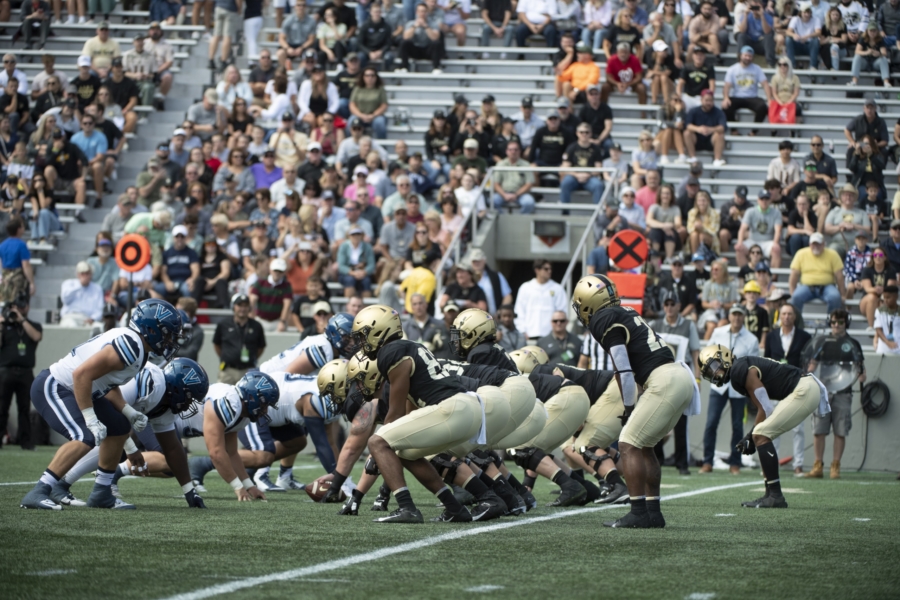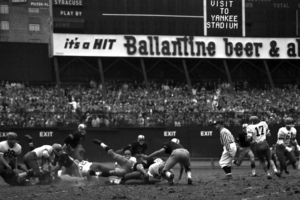We did an edition of the As For Football Army Football Show right before the season where we used basic statistics to discuss why the Fullback Dive is such a good play for your Army Black Knights. Our listeners really liked that show a lot. Fact is, you guys all really like math, which is not exactly surprising considering that most of our readers/listeners went to a top national engineering school.
Somebody joked with me on Twitter shortly thereafter, saying, “You guys should do imaginary numbers next!” and it was funny… right up until I figured out how to actually do it.
It’s a bye week, so we are finally following up. What follows is a brief discussion of imaginary numbers and why they matter in football.
The ground attack put up some numbers on Saturday ??#GoArmy pic.twitter.com/TEIHaJGebe
— Army Football (@ArmyWP_Football) September 19, 2022
Defining Terms: “Imaginary” vs. “Reactive” Numbers
Let’s start by acknowledging something that is surprisingly important — I hate using the term “imaginary” to describe the kind of math that we’re discussing this week. Calling numbers “imaginary” implies that they do not actually exist, and that they’re therefore not very important. Neither of these things is true. Thus, electrical engineering uses the term “reactive” to describe this same conceptual space, and for this reason — as well as for simple clarity — this article will discuss “reactive” power rather than “imaginary” power from here on out. As a matter of simple reality, all of this actually exists. It’s NOT just in our imaginations.
But what the Hell are we talking about?
Reactive Power is the power required to establish an electromagnetic field that’s strong enough to allow alternating current to flow. With that, we can move Real Power and therefore do Real Work.
Alas, this is hard to visualize, and made more so by the reality that a generation of basic electrical engineering professors have explained it as being similar to the head on a beer. In that analogy, it’s there, and you can see it, but it doesn’t do the real work of getting you drunk. However, that analogy implies that Reactive Power doesn’t do anything in and of itself, leading many students to think of Reactive Power as somehow wasteful.
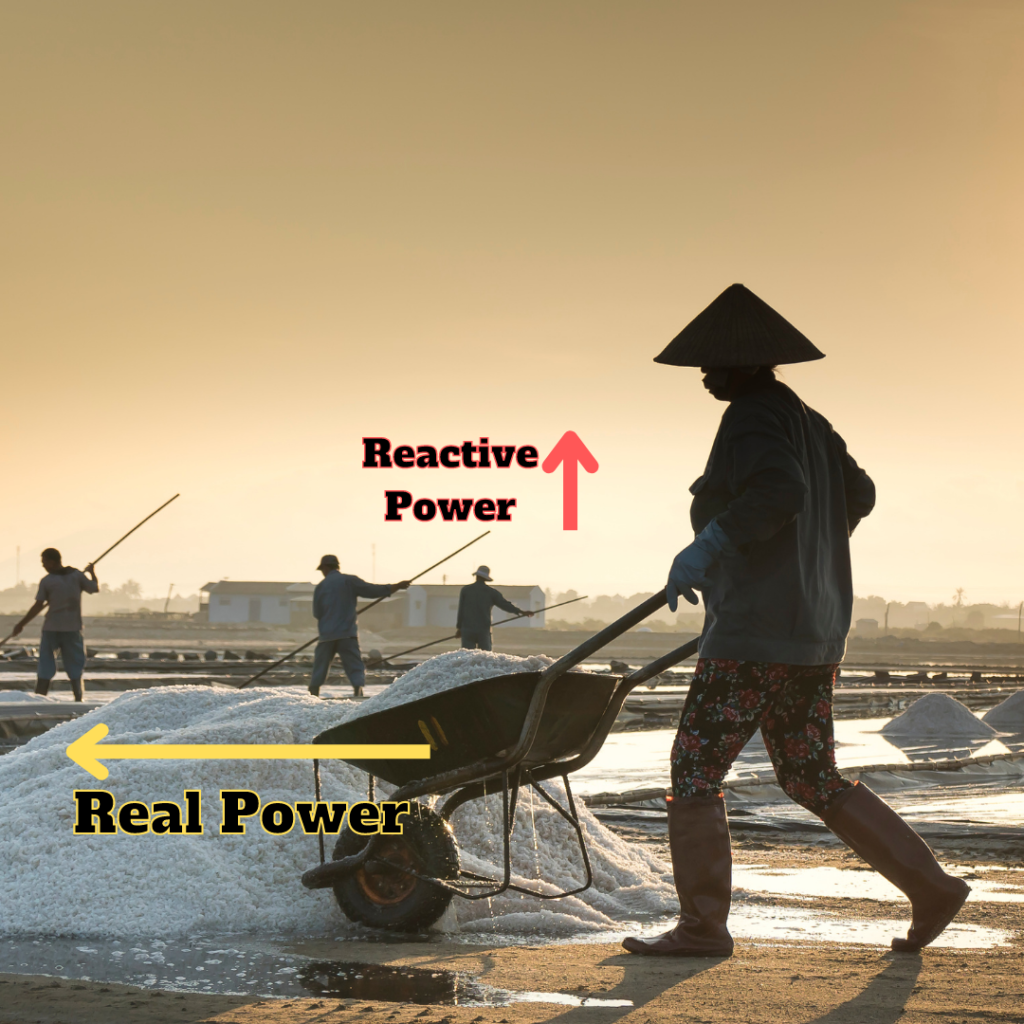
A better analogy comes via wheelbarrow. If you have a wheelbarrow full of salt, the Real Work is moving it from Point A to Point B along the x-axis, i.e. across the ground. However, we can’t move a wheelbarrow along the x-axis unless we first apply some force — reactive force — upwards, along the y-axis. Which is to say that you’ve got to lift that bad boy just a little bit before you can roll it forward.
So. Reactive power is power applied along the y-axis when what we’re measuring occurs along the x-axis.
Quiz Question. Have you figured out how this applies to football yet?
Reactive Power in Football
Arguably the most obvious example of reactive power in football occurs every time the quarterback throws a pass. We measure the pass in yards down the field, but the quarterback has to throw it up, at least a little, in order for it to travel out to the receiver. This is where arm-strength comes into play. The harder the quarterback throws the ball, the faster it travels, the less it needs to go up in order to go out. Thus, a quarterback with a relatively stronger arm will throw the ball flatter and more efficiently than a guy with a less-strong arm. That added speed and efficiency gives the strong-armed quarterback a better shot at putting the ball where he wants it and not into the arms of a defensive back because those defensive backs have less time to react to the ball in flight.
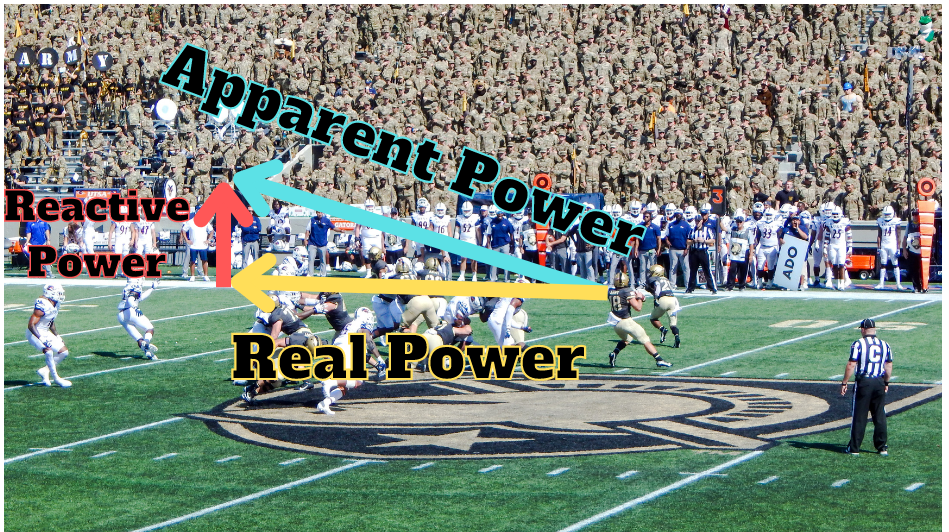
The same principles apply to blocking and tackling but in a less obvious way. Which is to say that a lineman must apply some upward force when he’s blocking in order to stay on his feet rather than falling on his face. However, to the extent that he can get low and apply force in the x-direction rather than stay high and “waste” force in the y-direction, the better his blocking efficiency, the more chance he has to knock the guy in front of him on his ass.
Imagine you’re an offensive lineman. Your Real Power is going into the guy you’re blocking. That’s the force we actually care about; that’s you doing Real Work. Your Reactive Power is whatever force holds you upright and keeps you from falling forward onto your face. It’s not imaginary. It’s necessary, and we need it, but in the film session, Coach is for sure not going to bring it up because, bottom line, it’s not doing anything for him. Your Apparent Power is the combination of the two (figured using the Pythagorean Theorem). Your Apparent Power is what you train in the weight room and can actually use on the field.
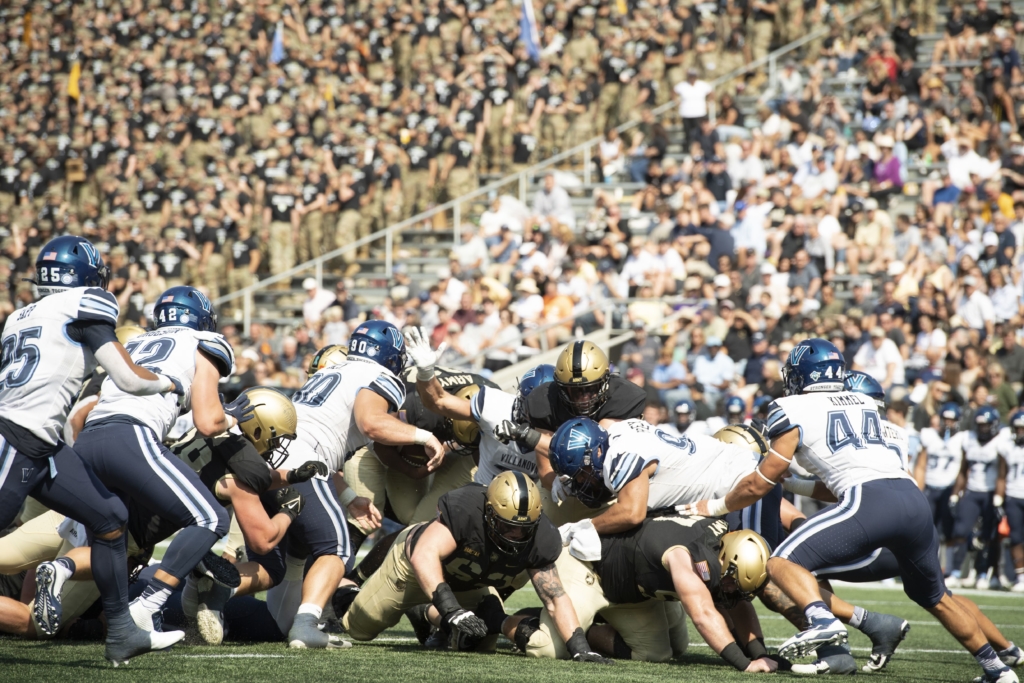
Thus, what we’re talking about here is efficiency of movement. Your Apparent Power is 100% of the force that you can bring to bear in a given situation. The way that you apply that force, i.e. the direction in which it’s applied, has a direct, measurable impact on its effectiveness — and therefore on your success. Getting low and applying more force in the x-direction rather than up to maintain your feet will maximize your impact on your opponents and therefore maximize your success.
Thus, the low man usually wins in football. By getting low, he applies more of the total force at his disposal in a useful direction — directly into his opponent.


